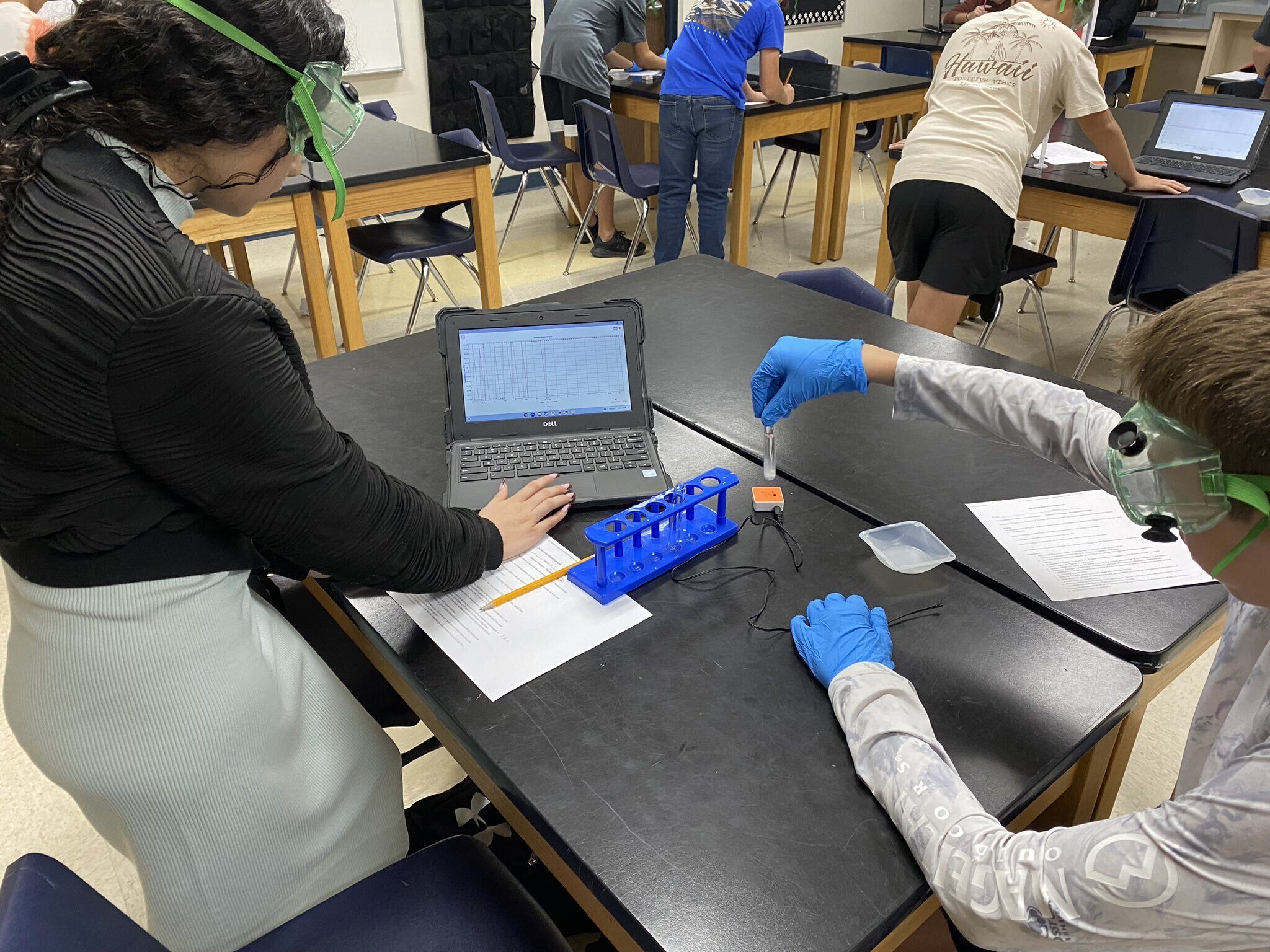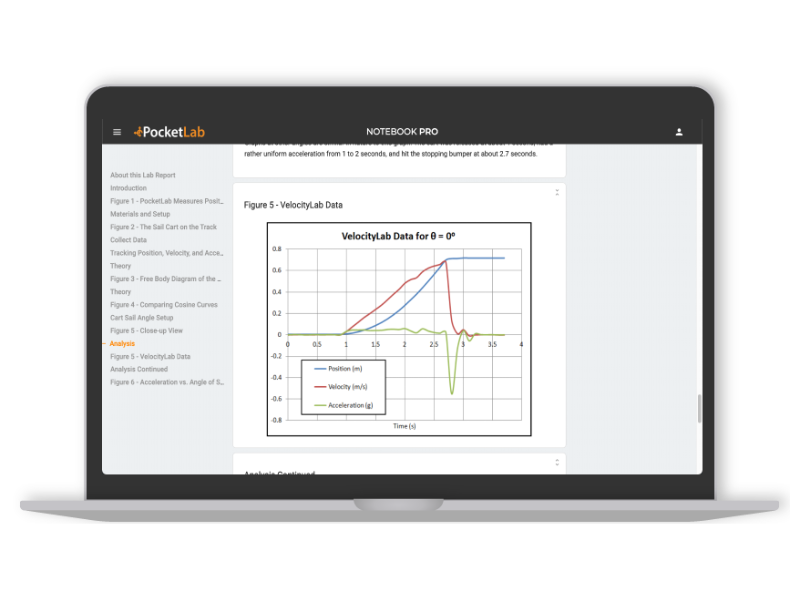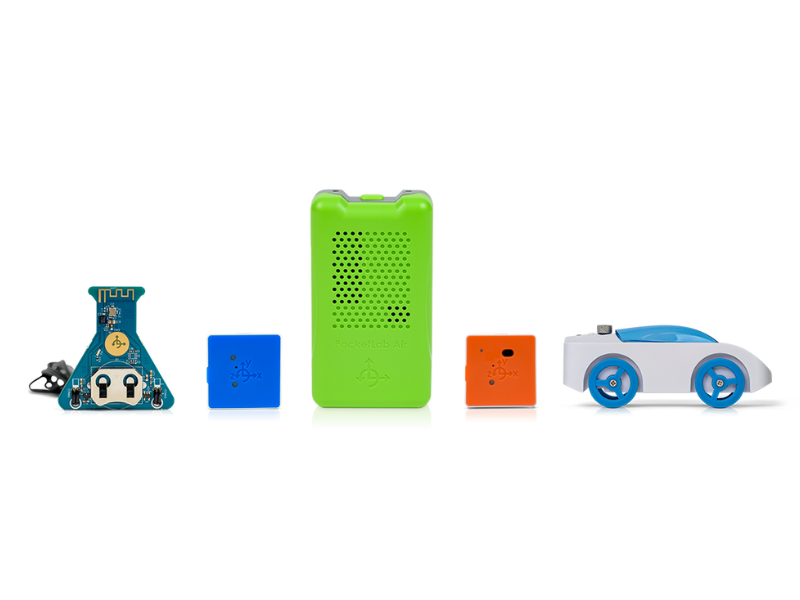How PocketLab Notebook Supports Inquiry-based Learning and Scientific Practices
PocketLab Notebook is an all-in-one digital science platform designed for classrooms that supports inquiry-based learning and scientific practices....
4 min read
Cool Things Being Done With PocketLabs Nov 13, 2024 10:25:06 AM

In today’s fast-paced world, fostering a love of science and inquiry among students has become both essential and challenging. With the Guided Inquiry Design (GID) framework plus PocketLab sensors, educators have a powerful tool to engage students in science learning that goes beyond memorization, fostering critical thinking, curiosity, and authentic exploration. For K-12 science educators, implementing this framework can deepen students' scientific understanding through hands-on experimentation and data analysis, especially when paired with tools like PocketLabs.
What is Guided Inquiry Design (GID)?
Guided Inquiry Design is a structured yet flexible framework that helps students engage in research and inquiry-based learning. Developed by Leslie Maniotes, Carol Kuhlthau, and Ann Caspari, GID organizes learning into phases that gradually deepen student engagement and understanding. This scaffolded process includes phases that progressively move students from wonder-like curiosity to clear scientific questioning based on concrete understanding of basic concepts. Students move through the phases in the process and teachers design it to support developing ideas about experimentation and content learning. The phases of GID are based on research from the information science field and designed for teachers to use. They are Open, Immerse, Explore, Gather, Create, Share, and Evaluate. The GID framework’s strength lies in its adaptability; educators can design the unit around standard based concepts and blend it with students' questioning and interests, making learning both personal and purposeful.

Benefits of Using GID in Science Education
Guided Inquiry Design in Action: Boston Latin School’s Science Fair Success
Boston Latin School’s implementation of the GID framework for semester-long science fair projects is a testament to the framework’s effectiveness. Teachers at Boston Latin have used GID to structure projects that span months, allowing students to engage deeply with scientific concepts and processes. This extended timeline is beneficial for thorough exploration and data collection.
For example, students uncover their interest during the Open and Immerse phases. Then, in the Explore, they can use PocketLabs to conduct experiments and gather data, refining their understanding of the topic. After having a base of knowledge they are ready to formulate a hypothesis to test in the gather phase to dig a little deeper. By the end of the semester, students have not only conducted rigorous scientific experiments but have also learned to analyze and present their findings, demonstrating a sophisticated understanding of the scientific method.
The experience at Boston Latin highlights how GID enables teachers to address misconceptions about science. Through structured inquiry, students come to realize that science isn’t just about knowing facts; it’s a dynamic process of discovery and revision. Check out this Guided Inquiry Design video page where the BLS teachers explain how using GID helped to shift students’ perspectives on scientific knowledge, address misconceptions and empower them to think of science as an evolving field.
Showcasing Smithsonian Education Summit Results
The Smithsonian’s annual Education Summit recently showcased how PocketLabs and GID work in harmony to create powerful science learning experiences. During one session, educators demonstrated how they blended hands-on experimentation with the GID process to support student-driven inquiry with impactful results.
For example, students using PocketLab Voyager could design their own experiments to answer questions like, “How does building materials affect the temperature around built environments such as in cities?” or “What are the environmental impacts of different building materials?” By moving through the phases of GID, students learned how to structure their investigations, gather data, and adjust their hypotheses as they gained new insights.

Video of this session is available on YouTube, offering educators a glimpse into precisely how PocketLabs can bring the GID framework to life. The session illustrates how real-time data collection transforms science learning from a static process into a dynamic journey of discovery.

Guided Inquiry Design: Free Webinars for Educators
To further support educators in using GID effectively, the Guided Inquiry Design website offers a series of free webinars. These sessions provide step-by-step guidance, examples, and strategies for implementing GID across various subjects, including science. Topics range from “Building Inquiry Units” to “Assessing and Reflecting with GID,” giving teachers practical tools to enhance their practice.
Check out the GID webinars page to find upcoming sessions and archived videos.
A Nod to the Smithsonian Teacher Innovator Institute
The Smithsonian Teacher Innovator Institute (TII) is another excellent resource for educators looking to enhance their science instruction. This program offers professional development for teachers, equipping them with strategies for integrating innovative resources and hands-on learning into their classrooms. Graduates of TII learn to use inquiry-based learning methods, including GID, to deepen students' engagement and critical thinking skills.

Conclusion
Integrating the Guided Inquiry Design framework with hands-on tools like PocketLabs can revolutionize science education, making learning more engaging, relevant, and effective. Whether teachers are facilitating semester-long projects, addressing misconceptions about science, or simply making experiments more interactive, Guided Inquiry Design provides a roadmap for deep and meaningful exploration.
By leveraging the tools and resources available through GID, Smithsonian Education, and PocketLabs, K-12 educators can foster a new generation of curious, thoughtful scientists ready to explore the world around them.

PocketLab Notebook is an all-in-one digital science platform designed for classrooms that supports inquiry-based learning and scientific practices....

PocketLab products have revolutionized hands-on learning in science, technology, engineering, and mathematics (STEM) education. While many educators...

It has been just over a year since the first ScIC launched. And WOW, what a year it has been. ScIC has attracted 46,436 teachers...